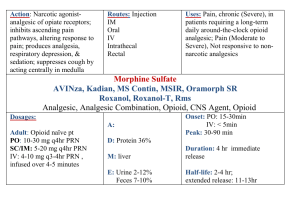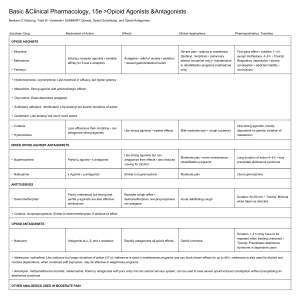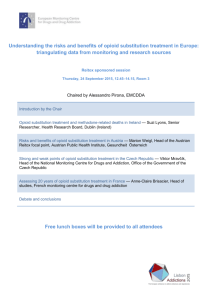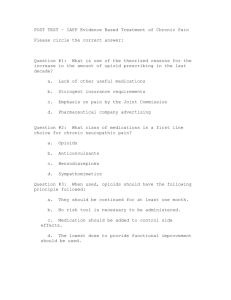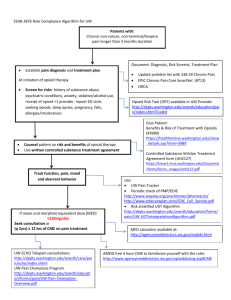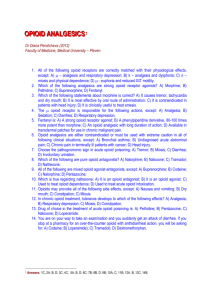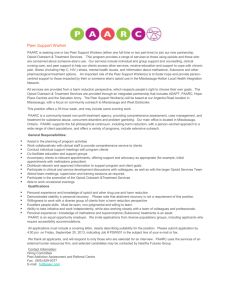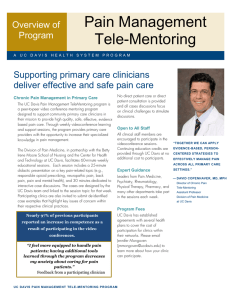Appendix 19: DIRE score: patient selection for chronic opioid
advertisement
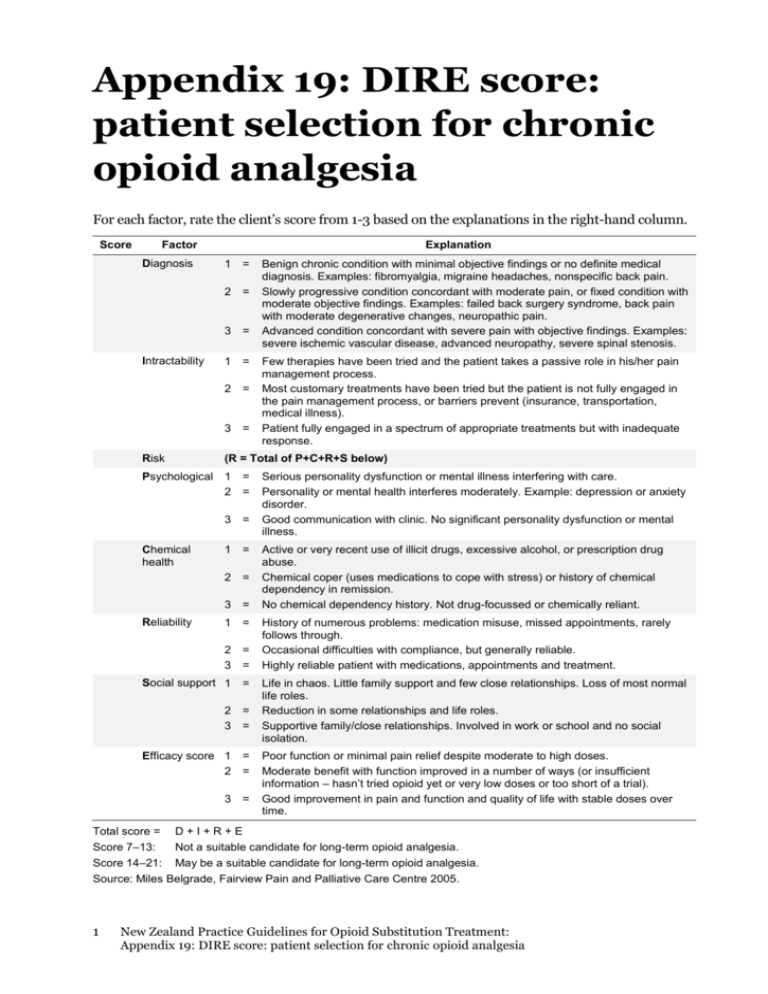
Appendix 19: DIRE score: patient selection for chronic opioid analgesia For each factor, rate the client’s score from 1-3 based on the explanations in the right-hand column. Score Factor Diagnosis Intractability Risk Explanation 1 = 2 = 3 = 1 = 2 = 3 = = = 3 = 1 = 2 = 3 = 1 = 2 3 = = Social support 1 = 2 3 = = Efficacy score 1 2 = = 3 = Reliability Few therapies have been tried and the patient takes a passive role in his/her pain management process. Most customary treatments have been tried but the patient is not fully engaged in the pain management process, or barriers prevent (insurance, transportation, medical illness). Patient fully engaged in a spectrum of appropriate treatments but with inadequate response. (R = Total of P+C+R+S below) Psychological 1 2 Chemical health Benign chronic condition with minimal objective findings or no definite medical diagnosis. Examples: fibromyalgia, migraine headaches, nonspecific back pain. Slowly progressive condition concordant with moderate pain, or fixed condition with moderate objective findings. Examples: failed back surgery syndrome, back pain with moderate degenerative changes, neuropathic pain. Advanced condition concordant with severe pain with objective findings. Examples: severe ischemic vascular disease, advanced neuropathy, severe spinal stenosis. Serious personality dysfunction or mental illness interfering with care. Personality or mental health interferes moderately. Example: depression or anxiety disorder. Good communication with clinic. No significant personality dysfunction or mental illness. Active or very recent use of illicit drugs, excessive alcohol, or prescription drug abuse. Chemical coper (uses medications to cope with stress) or history of chemical dependency in remission. No chemical dependency history. Not drug-focussed or chemically reliant. History of numerous problems: medication misuse, missed appointments, rarely follows through. Occasional difficulties with compliance, but generally reliable. Highly reliable patient with medications, appointments and treatment. Life in chaos. Little family support and few close relationships. Loss of most normal life roles. Reduction in some relationships and life roles. Supportive family/close relationships. Involved in work or school and no social isolation. Poor function or minimal pain relief despite moderate to high doses. Moderate benefit with function improved in a number of ways (or insufficient information – hasn’t tried opioid yet or very low doses or too short of a trial). Good improvement in pain and function and quality of life with stable doses over time. Total score = D + I + R + E Score 7–13: Not a suitable candidate for long-term opioid analgesia. Score 14–21: May be a suitable candidate for long-term opioid analgesia. Source: Miles Belgrade, Fairview Pain and Palliative Care Centre 2005. 1 New Zealand Practice Guidelines for Opioid Substitution Treatment: Appendix 19: DIRE score: patient selection for chronic opioid analgesia

